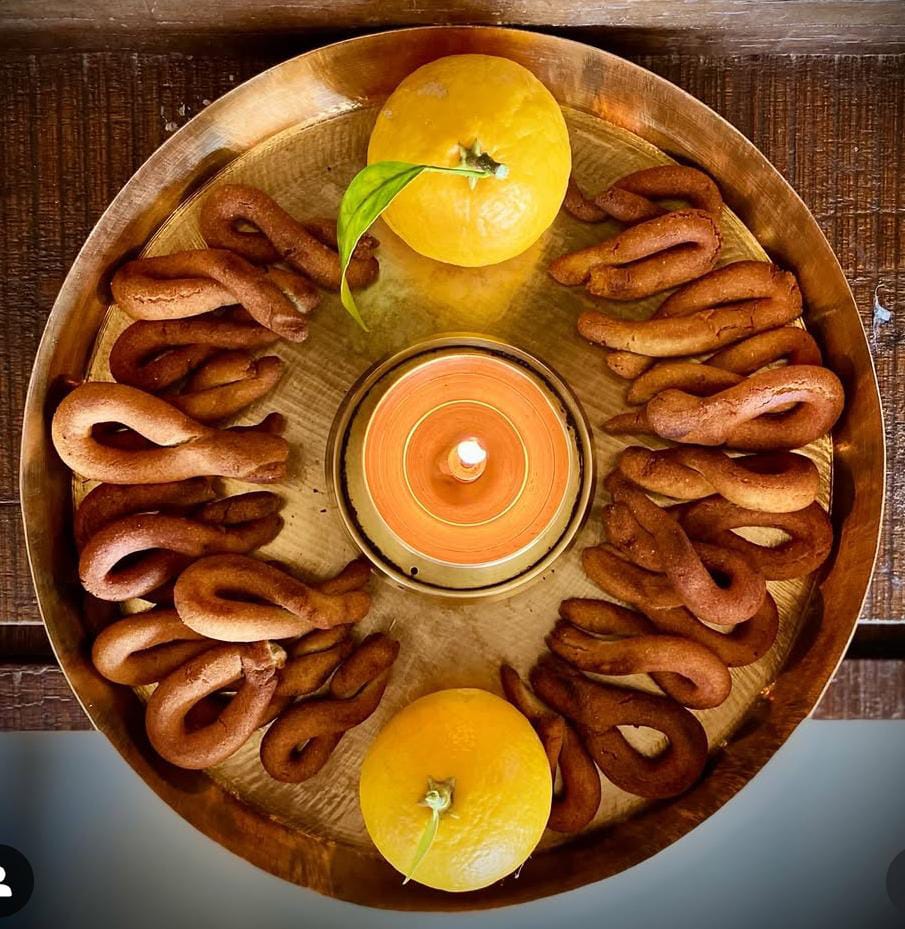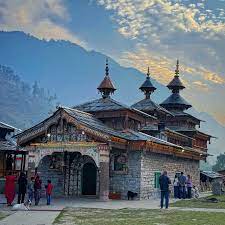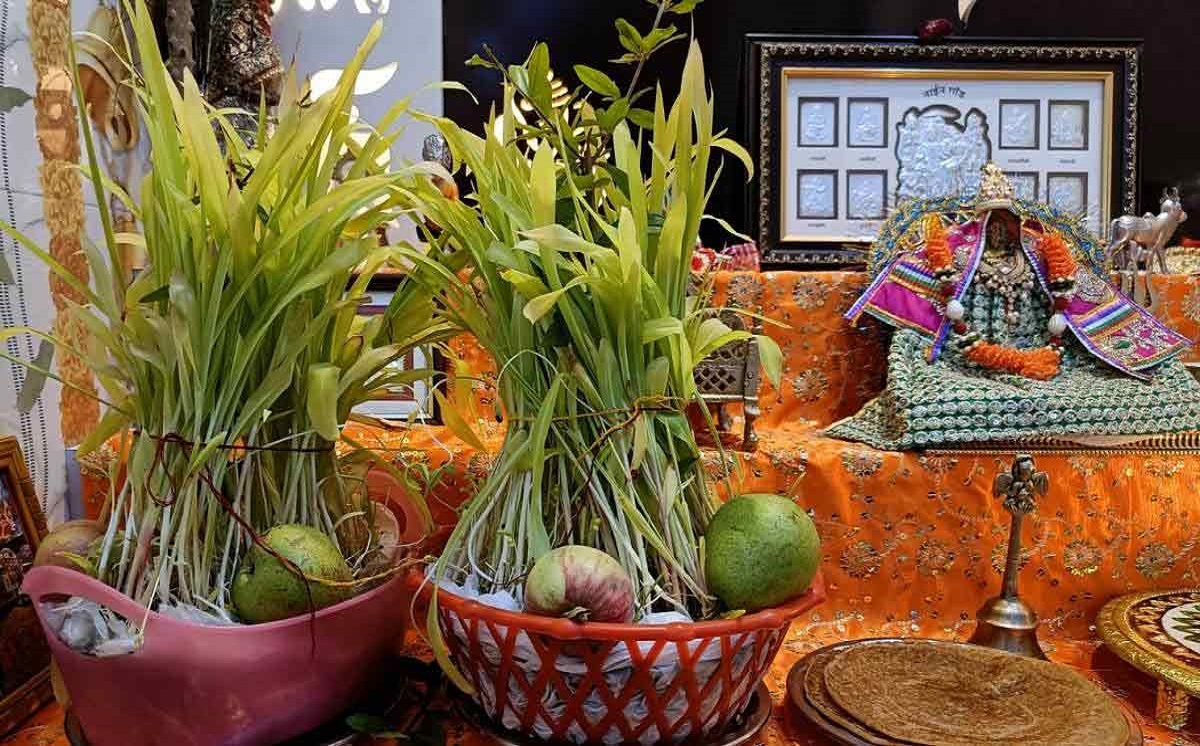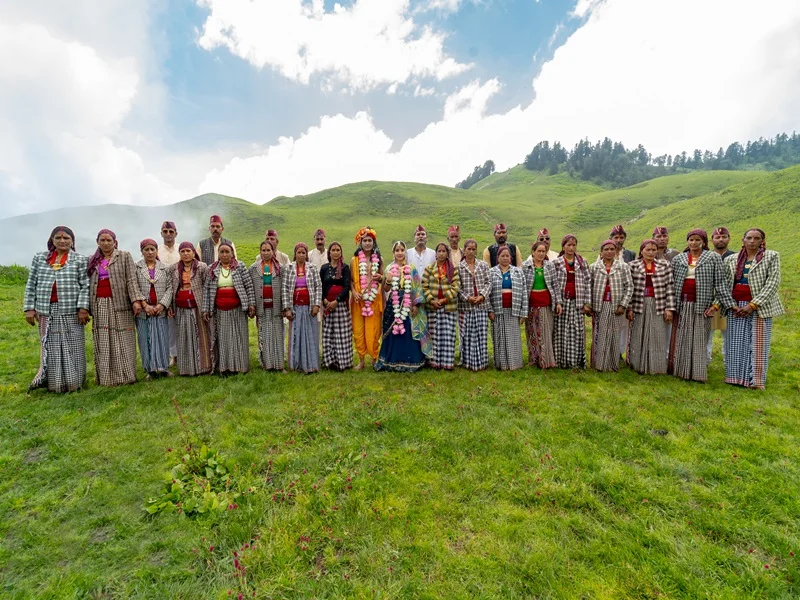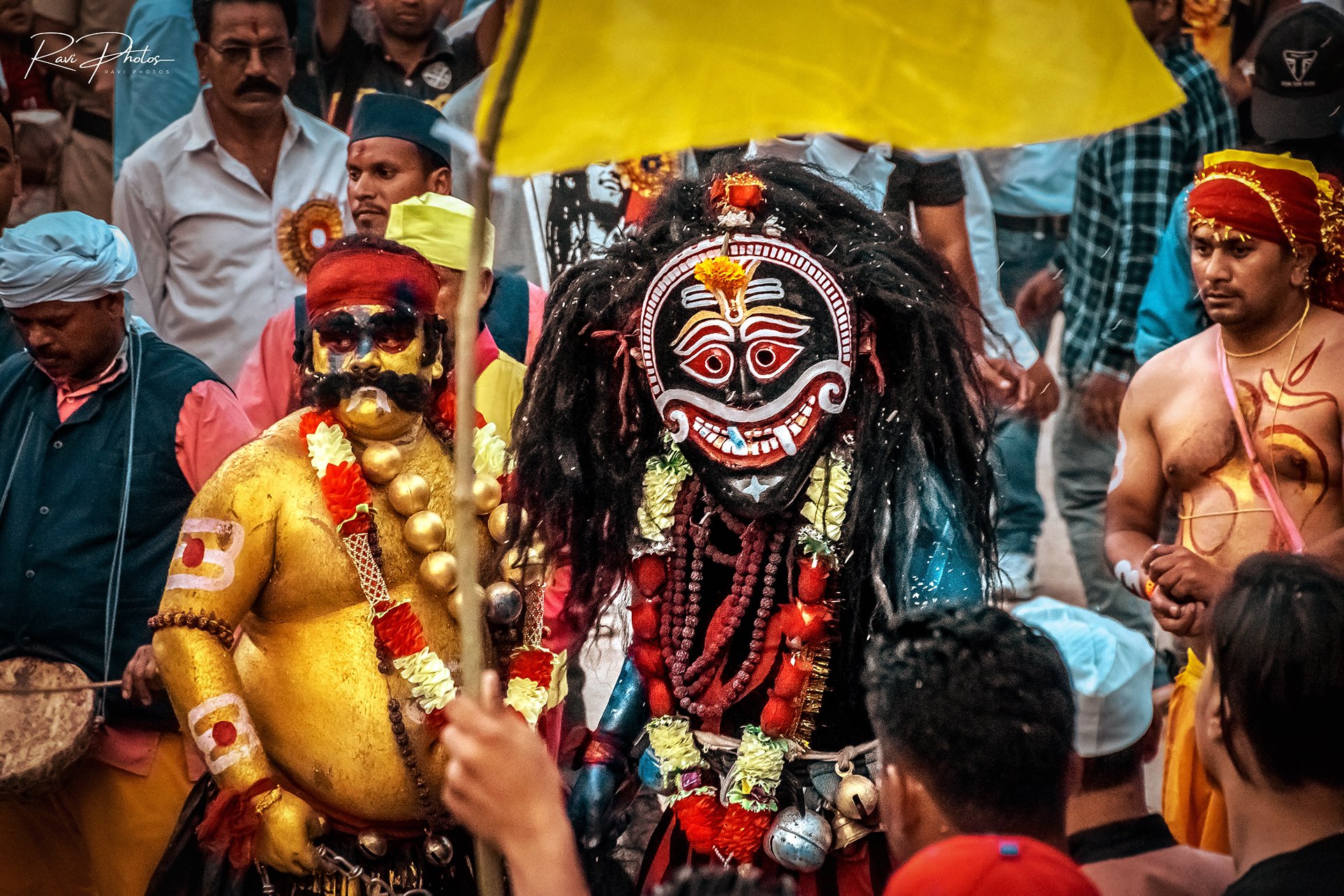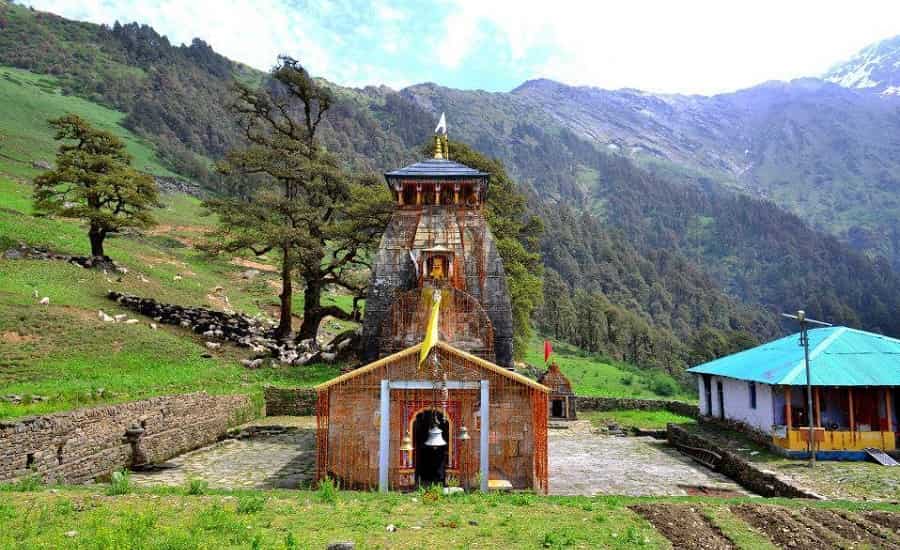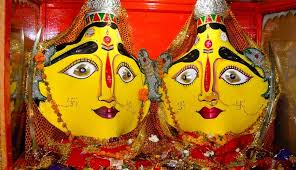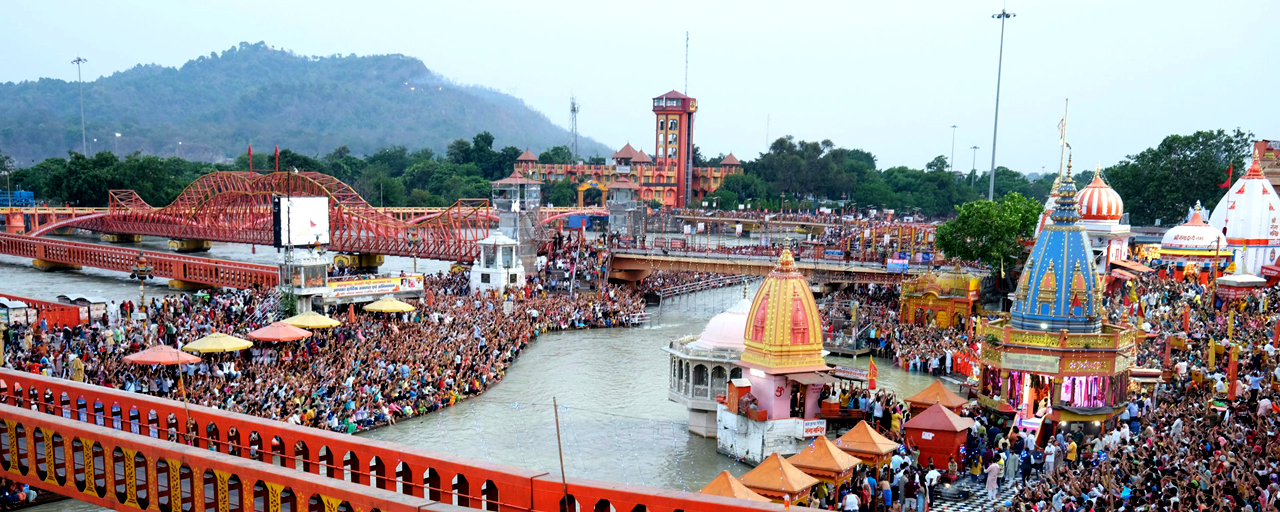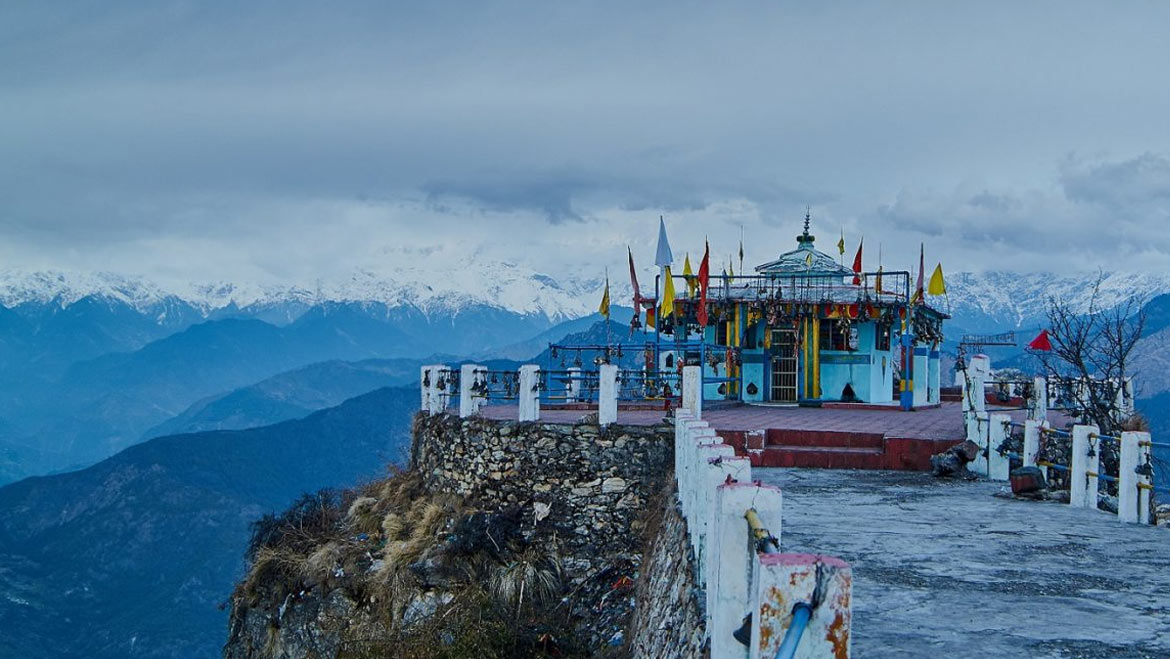Imagine a frosty January morning in the Kumaon hills. The sun is hesitant, the mist curls lazily between pine trees, and from the rooftops you hear children chanting in sing-song voices:
“काले कौवा, घुघुति माला खाले...”
And then it happens. A crow swoops down, pecks at a sweet hanging from a child’s garland, and suddenly there’s laughter, clapping, and the smell of jaggery wafting in the air. This is घुघुतिया (Ghughutiya), a festival that looks simple but carries the weight of centuries of memory, faith, and playfulness.
क्या है घुघुतिया?
In Kumaon, while the rest of India celebrates मकर संक्रांति, families wake early to honor not just the sun but also their winged companions the crows. On the night before, kitchens come alive. Mothers knead atta with jaggery and ghee, shape the dough into little rings, drums, and tiny animals, and fry them till golden. These sweets, called घुघुते, are strung into garlands.
At dawn, children wear these malas proudly, run to terraces, and call out to the crows. The first crow that takes a bite is celebrated as if a guest from the heavens has blessed the family.
कहानियाँ और दंतकथाएँ
Ask anyone in Almora or Pithoragarh why Ghughutiya is celebrated, and you’ll be lost in a swirl of folk stories.
One goes like this: once a wicked minister named Ghughutiya plotted against his king. The loyal crows warned the prince, saving him. To honor the birds, people began feeding them sweets every Sankranti.
Another tale says of a king who faced famine, and on the goddess’s advice, people offered food to crows. Soon, rains came, crops flourished, and Ghughutiya became a promise of abundance.
For elders, these stories are not just bedtime tales; they are reminders that nature, whether a crow or a crop, always walks with us.
सुबह की छतों पर
If you’ve ever been to Kumaon during this festival, you’ll know the joy is in the small moments. Children, half-asleep but too excited to stay in bed, run to rooftops wrapped in shawls. Their malas jingle with sweets shaped like दमरू, सूर,ज, and पशु.
“काले कौवा, घुघुति माला खाले...” they sing, their voices echoing across valleys.
And when a crow finally swoops down, wings cutting through the cold air, and pecks at a sweet, children jump and cheer. For them, it’s not just about feeding birds; it’s like being seen, blessed, chosen.
घुघुते का स्वाद
Bite into a ghughuta, and you taste warmth. Crisp edges, soft insides, jaggery’s earthy sweetness mingling with ghee it’s humble, but it feels like home.
Every family has its variation. Some add sesame, some use sugar instead of jaggery, some string in puffed rice or popcorn. But the heart is the same: food as offering, food as memory.
Alongside ghughute, kitchens brim with खिचड़ी, पूवे, बड़े all winter delicacies rich in ghee, perfect for the season’s chill.
क्यों मनाते हैं ये त्यौहार?
Ghughutiya isn’t about grandeur. It’s about:
- प्रकृति से जुड़ाव: Feeding crows is a way of saying, “We see you, we thank you.”
- पूर्वजों की याद: Many believe crows carry messages of ancestors. By feeding them, people honor family lines.
- ऋतु का बदलाव: With Sankranti, the sun begins its northward journey. Longer days bring hope.
- बचपन और समुदाय: This is one of the rare festivals where children lead the rituals. Their joy keeps the tradition alive.
दादी की याद
I once heard an old woman in Almora recall:
“जब हम छोटे थे, सबसे बड़ा मज़ा घुघुतिया में आता था. ठंडी सुबह में छत पर दौड़ते, कौवे को पुकारते. जब वो एक टुकड़ा तोड़ लेता, तो लगता जैसे दादी-नानी का आशीर्वाद मिल गया हो.”
That’s the real soul of the festival not ritual, not sweets, but the feeling that the invisible threads of ancestry and nature are still woven around us.
आज के समय में घुघुतिया
Yes, times are changing. Cities have fewer terraces, and children spend more time on phones than calling out to birds. In Dehradun or Delhi, families fry ghughute, but sometimes there are no crows to feed.
But the tradition hasn’t vanished. In Kumaoni villages, children still wait at dawn. Schools in Almora and Nainital even organize special events to teach kids the songs and stories. Cultural groups document folk rhymes, keeping the practice alive.
Even those who’ve migrated return in memory calling their parents, asking, “माला बना क्या?” It shows how festivals travel in hearts even when bodies move away.
अनुभव लेना हो तो...
If you ever want to experience Ghughutiya truly:
- Be in Kumaon around 14th January.
- Stay in a homestay or village home rooftop rituals are the soul of it.
- Wake up before sunrise, join children in calling crows.
- Don’t just watch, sing with them. Even one line of “काले कौवा...” is enough.
- Taste the ghughute warm, with chai. That flavor is memory in itself.
- Visit the उत्तरायणी मेला in Bageshwar, which often coincides, to see the larger cultural canvas.
क्यों ज़रूरी है ये परंपरा?
Because in a world rushing toward screens and speed, Ghughutiya slows us down. It teaches that joy can be as simple as a crow nibbling at a sweet. That honoring ancestors needn’t be grand it can be a child’s rhyme in the cold morning.
Most of all, it reminds us that festivals are not performances, but rather a shared experience, such as sharing food with birds, telling stories to children, and offering blessings to neighbors.
अंतिम विचार
Ghughutiya is not just a festival. It is the smell of gur in ghee, the sight of black wings against white frost, the echo of children’s laughter bouncing off the stone walls of old Kumaoni houses. It is memory stitched with food, faith expressed through play, and the timeless wisdom of a community that knows nature, ancestors, and children are all part of the same circle.
So next time you’re in the hills around January, look up. If you hear “काले कौवा, घुघुति माला खाले...,” smile. You’ve just stepped into one of Kumaon’s most tender traditions.

